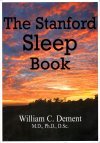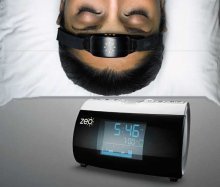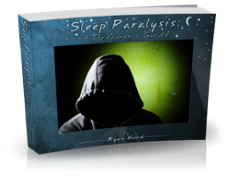
| Connect & Subscribe |
The following is a visitor-submitted question or story. For more, you can submit your own sleep story here, or browse the collection of experiences and questions other visitors have shared here.
How To Use Light Therapy?
I've been reading through the DSPS section of this website. In the main article, the author mentions light therapy as a way to treat DSPS. He says that for it to be effective the light would have to be at least 10,000 lux, and you should have the light in your periphery because doing so causes the light to activate more photoreceptors in your retina.
Firstly, is what I said above true? Did I misunderstand anything I read?
Secondly, could you talk more about how to use light therapy as a treatment for DSPS? Specifically, I'd like to know when to expose yourself, for how long, at what intensity etc. I anticipate that the answer will involve saying that it depends on the person and circumstances. If so, could you 1) give general guidelines and 2) talk about how the specifics and circumstances of the person affect how you use light therapy as a treatment (ex. if you have good sleep hygiene, typically sleep from 5AM to 2PM and want to sleep from 12AM to 8AM; hopefully I didn't get my AM and PM confused)
Finally, are there any good light box products that you would recommend?
Thanks a lot for your help.
Kevin: Hey, thanks for your question. Your description in the first paragraph sounds like you interpreted those elements from the article correctly. 10,000 lux is what I've heard in class to be the ideal minimum strength of the light to be effective, and you want it in your periphery so that it's incidental to your activity and focus, just like sunlight is normally during the day.
Artificial light (computer screens, TV, lights on at night) makes it easy for our brain to think that night time is actually part of the day still. The idea behind using a light box to shift circadian
The way you do this is by exposing yourself to bright light in the morning, progressively closer to your target wake time. Meanwhile, you also want to stay away from bright artificial light deep into the night.
So for shifting a delayed sleep phase backward, you want bright light in the morning upon waking (or even better, before waking). On the flip side, for shifting an advanced sleep phase forward, you want bright light in the evening or early night.
Light boxes are the real professional way to go about shifting your circadian, but I find for me personally that sleeping with the curtains open is usually good enough to shift me in a few days. With my curtains open, bright sunlight enters the room around 7 or 8AM. If I'm still sleeping at the time, the light can still make its way through my eyelids to communicate with my brain, letting it know its daytime. Some light boxes I believe come with timers that lets you control when they come on and turn off, so alternatively you'd probably be able to achieve a similar effect with a user-friendly light box.
I've never used one myself, so I don't have any recommendations on a specific product. Has anyone out there reading this found a light box that they have found particularly useful? Furthermore, does anyone have any additional commentary or questions about light therapy in general? Feel free to post any thoughts using the comments link below.
Kevin
(Please keep in mind that I am a student of sleep science and not a medical doctor. Please take any thoughts I give with my background in mind.)
Comments for How To Use Light Therapy?
|
||
|
||
|
||
|
||
|
||
|
||
About This Site
Welcome! This site is continuously being created by students of Dr. William C. Dement's Sleep And Dreams course at Stanford University.
We made this site as a call to action for people all over the world to live healthier, happier, safer, and more productive lives by learning about their own sleep. We have faith that reading the information provided on this site will motivate you to be smart about your sleep deprivation and strategic about your alertness in order to live life to your fullest, most energetic potential.
In fact, we challenge you to do so! What do you say, are you up for the challenge?
Interviews With Sleep Specialists: Insights Into the Worlds of Sleep Medicine & Sleep Business
America's Most Dangerous Disorder: What Is Sleep Apnea Doing To Your Sleep?
Sleep Debt: How Much More Will You Achieve When You Reduce Yours?
The Stages Of Sleep: The Journey Through The Night
Delayed Sleep Phase: You Want To Sleep But You're Not Tired Yet
Paralyzed at Night: Is Sleep Paralysis Normal?
Sleep In Words: Smart, Strange, and Funny Quotes About Sleep
Sleep Disorders In Children: What's Keeping Your Child From A Full Night's Rest?
Attacks of Pavor Nocturnus (a.k.a. Sleep Terrors, Night Terrors, or Incubus Attacks)
A Note On Visitor-Submitted Questions:
Publishing sleep stories and questions from our visitors is meant to create a forum for open and proactive dialogue about an extremely important portion of our lives (one that occupies 1/3 of it and affects the other 2/3) that isn't talked about enough. It is not meant to substitute a trip to the doctor or the advice of a specialist. It's good to talk; it is not good to avoid consulting someone who's profession it is to help you with this kind of stuff.
If you are in any way concerned about your sleep health, don't wait for an answer on here, and don't necessarily rely on them. See a sleep specialist in your area as soon as possible.
The Stanford Sleep Book
Dr. Dement's pioneering textbook has been the core text for Sleep and Dreams since 1980, but it has just recently been made available to the wider public for the first time.
In it you'll find a more detailed account of the most important things you need to know about sleep, alertness, dreams, and sleep disorders. Studies, statistics, plus plenty of Dr. Dement's classic anecdotes painting the history of sleep medicine.
Preface | Intro | Contents | Get A Copy
More Sleep Resources
The Zeo
A revolution in personal sleep tracking, the Zeo is a wireless headband that transmits your brainwaves in realtime to a dock (pictured here) or your smartphone. The result? You can wake up and see exactly what stages of sleep you were in during the night! Unprecedented personalized sleep knowledge.
Sleep Paralysis: A Dreamer's Guide
Ever woken up paralyzed? A surprising number of us have, believe it or not. But few know the actual causes of this phenomenon, and fewer still how to exert control over it. Dream researcher and sleep paralysis expert Ryan Hurd shares breakthrough insights into how to do just that.
Important Disclaimer
Please Note:
The information found on this page and throughout this site is intended for general information purposes only. While it may prove useful and empowering, it is NOT intended as a substitute for the expertise and judgments of healthcare practitioners.
For more info, see our
Terms of Use.









